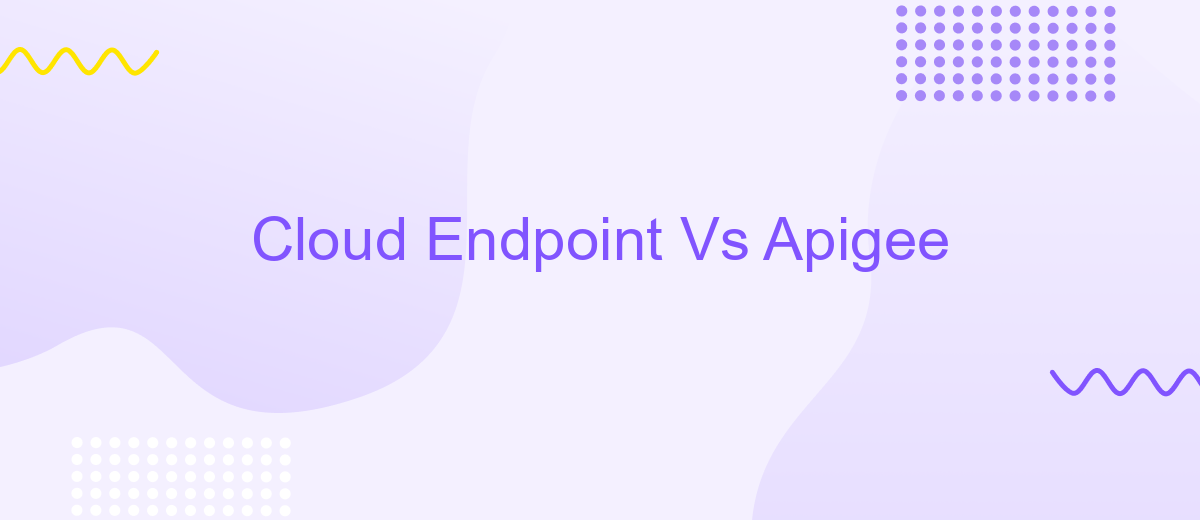Cloud Endpoint Vs Apigee
In the evolving landscape of API management, choosing the right platform is crucial for seamless integration and performance. This article delves into a comparative analysis of Cloud Endpoints and Apigee, two leading API management solutions. We'll explore their features, strengths, and use cases to help you determine which platform best aligns with your business needs and technical requirements.
Overview
Cloud Endpoints and Apigee are two popular solutions for managing APIs, each offering unique features tailored to different needs. Cloud Endpoints, a product from Google Cloud, focuses on providing a lightweight API gateway that is easy to deploy and manage. It integrates seamlessly with other Google Cloud services, making it an excellent choice for those already invested in the Google ecosystem.
- Cloud Endpoints: Lightweight, easy to deploy, integrates with Google Cloud.
- Apigee: Comprehensive API management, advanced analytics, robust security features.
On the other hand, Apigee, another Google product, offers a more comprehensive suite of API management tools. It provides advanced analytics, robust security features, and extensive customization options, making it suitable for enterprises with complex API management needs. For those looking to streamline their integration processes, services like ApiX-Drive can be invaluable. ApiX-Drive automates and simplifies the integration of various applications, enhancing the overall efficiency of your API management strategy.
Features

Cloud Endpoints and Apigee both offer robust features for API management, but they cater to different needs. Cloud Endpoints, powered by Google Cloud, provides a lightweight solution ideal for developers looking to manage, deploy, and secure their APIs with minimal hassle. It supports OpenAPI and gRPC, ensuring seamless integration and scalability. Additionally, Cloud Endpoints offers built-in authentication and monitoring, making it easier for developers to maintain control over their APIs.
On the other hand, Apigee, also a Google product, is designed for enterprises requiring advanced API management capabilities. It offers extensive analytics, traffic management, and monetization options, which are crucial for businesses looking to optimize their API strategy. Apigee's robust security features, including OAuth, SAML, and two-way TLS, ensure that APIs remain secure. For those needing to integrate multiple services and automate workflows, tools like ApiX-Drive can complement Apigee by simplifying the process of connecting various applications and services, enhancing overall productivity and efficiency.
Pricing

When comparing the pricing of Cloud Endpoints and Apigee, it's essential to consider the specific needs and scale of your project. Cloud Endpoints offers a pay-as-you-go model, making it economical for small to medium-sized applications. Apigee, on the other hand, provides a more comprehensive set of features, which can justify its higher cost for larger enterprises.
- Cloud Endpoints: Charges are based on the number of API calls, with a free tier available for low-usage scenarios.
- Apigee: Offers several pricing plans, including Standard, Enterprise, and Enterprise Plus, each with varying levels of support and features.
For businesses looking to integrate multiple applications and services, tools like ApiX-Drive can offer additional value by automating and streamlining the integration process. This can help reduce costs associated with manual integration efforts and make the overall API management more efficient. Therefore, while evaluating pricing, consider not only the direct costs but also the potential savings from improved efficiency and automation.
Use Cases

When deciding between Cloud Endpoints and Apigee, it's important to consider the specific use cases for each. Cloud Endpoints is ideal for developers looking for a simple, cost-effective way to expose their APIs. It integrates seamlessly with Google Cloud services, making it a great choice for those already using the Google Cloud ecosystem.
On the other hand, Apigee is designed for more complex API management needs. It provides advanced features such as traffic management, security, and analytics, making it suitable for enterprises that require robust API solutions. Apigee's capabilities extend beyond basic API exposure, offering tools for API monetization and developer engagement.
- Cloud Endpoints: Best for simple API exposure, cost-effective, integrates with Google Cloud.
- Apigee: Ideal for complex API management, advanced features, enterprise-level solutions.
- ApiX-Drive: Useful for setting up integrations between various services and APIs, enhancing automation.
Choosing the right tool depends on your specific needs. For straightforward API exposure, Cloud Endpoints is sufficient. For more detailed API management and enterprise features, Apigee is the better choice. Additionally, services like ApiX-Drive can assist in automating integrations, further streamlining your operations.
Conclusion
In conclusion, both Cloud Endpoints and Apigee offer robust solutions for API management, each with its own set of strengths. Cloud Endpoints is a lightweight, cost-effective option that integrates seamlessly with Google Cloud services, making it ideal for developers who prioritize simplicity and efficiency. On the other hand, Apigee provides a comprehensive suite of tools for API lifecycle management, including advanced analytics, security, and monetization features, which are crucial for enterprises with complex API ecosystems.
When deciding between the two, consider the specific needs of your project. If you require extensive customization and advanced features, Apigee might be the better choice. However, for straightforward API management with tight integration into the Google Cloud ecosystem, Cloud Endpoints is likely more suitable. Additionally, services like ApiX-Drive can further simplify the integration process, offering a user-friendly platform to connect various applications and automate workflows, enhancing the overall efficiency of your API management strategy.
- Automate the work of an online store or landing
- Empower through integration
- Don't spend money on programmers and integrators
- Save time by automating routine tasks
FAQ
What is the primary difference between Cloud Endpoints and Apigee?
Which service is better for handling a high volume of API requests?
Can I use both Cloud Endpoints and Apigee together?
How do I implement API automation and integration settings?
Which service is more cost-effective for small businesses?
Apix-Drive is a universal tool that will quickly streamline any workflow, freeing you from routine and possible financial losses. Try ApiX-Drive in action and see how useful it is for you personally. In the meantime, when you are setting up connections between systems, think about where you are investing your free time, because now you will have much more of it.


